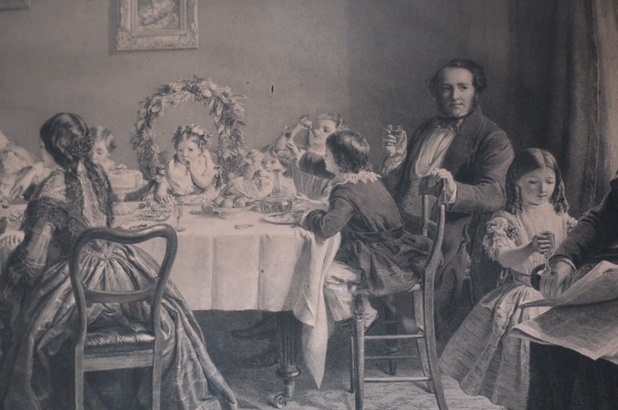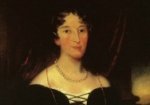In the schoolroom at Rouse Hill House an engraving shows a child’s birthday party in full swing – with the very real risk that some of the party-goers will end up on the floor!
The engraving is titled ‘Many Happy Returns of the Day’, after the original 1856 genre scene by the well known Victorian painter William Powell Frith. It is an idealised scene of comfortable, multi-generational Victorian family life – complete with slightly bored patriarch to one side being offered a drink by a subservient dutiful granddaughter ready for the toast. The dining table is cluttered with festive food (an iced cake, fruit, sweets – and are those boys swigging a sherry?), a contented servant holds the presents, the birthday girl herself sits looking slightly stunned by all the goings-on beneath a hoop of flowers tied to her chair (and notice that she stares directly at the viewer?), the men and boys are clustered to the right and four generations of women are to the left, and exactly who is the centre of attention is unclear in the commotion.
Many Happy Returns of the Day. Engraving after William Powell Frith. Rouse Hill House collection Sydney Living Museums
Being a scene at a dining table there are chairs – but of several different types:
Detail showing chairs from Many Happy Returns of the Day. Engraving after William Powell Frith. Rouse Hill House collection Sydney Living Museums
While the adults sit on conventional balloon-back chairs, notice that the younger, calmer and collected girl here sits on a high, narrow chair, while her boisterous brothers sit on a different style altogether.
Introducing the Astley Cooper torture posture chair
The dining room at Rouse Hill contains chairs that could be used to recreate the Frith scene. Both adult’s chairs, and a child’s high chair. Both have a ‘balloon’ back, as you can see here:
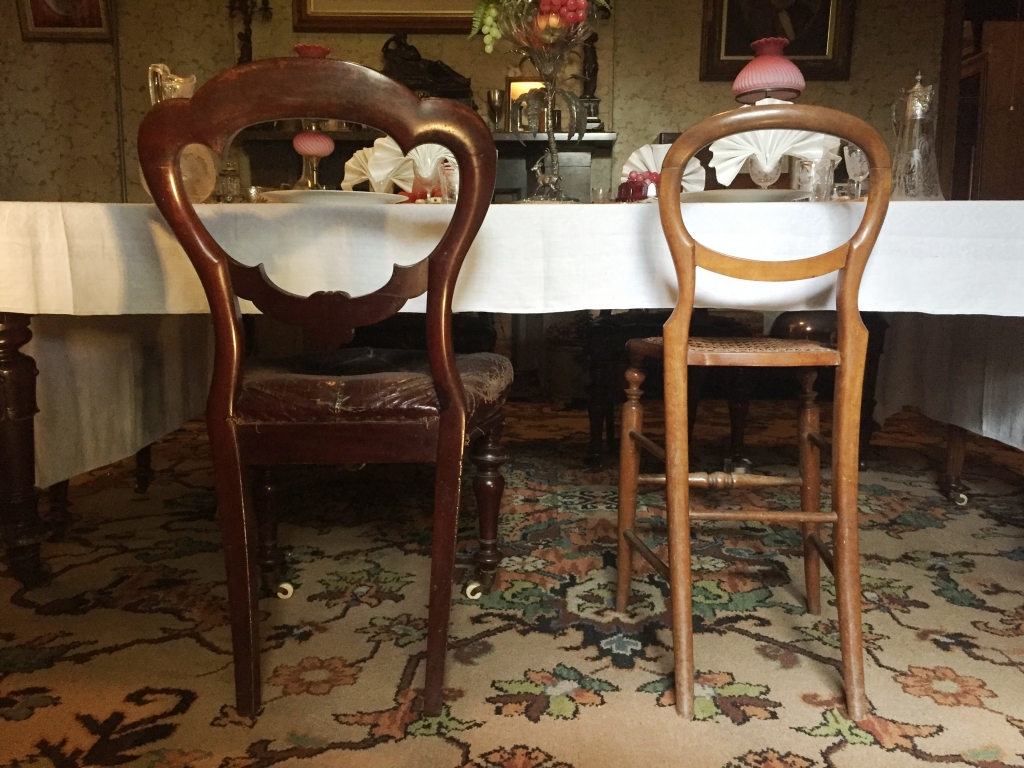
Adults dining and childs posture chair at Rouse Hill House. Photo (c) Scott Hill for Sydney Living Museums
While it could serve as a high chair, so a child could sit at a high or dining table, the other purpose of children’s chairs such as these was to force a child to sit upright and create good posture. Posture chairs usually had a straight back, typically in ladder form. The rounded back and proportionally larger seat of the Rouse chair suggests it was for use at the dining table rather than in the nursery.
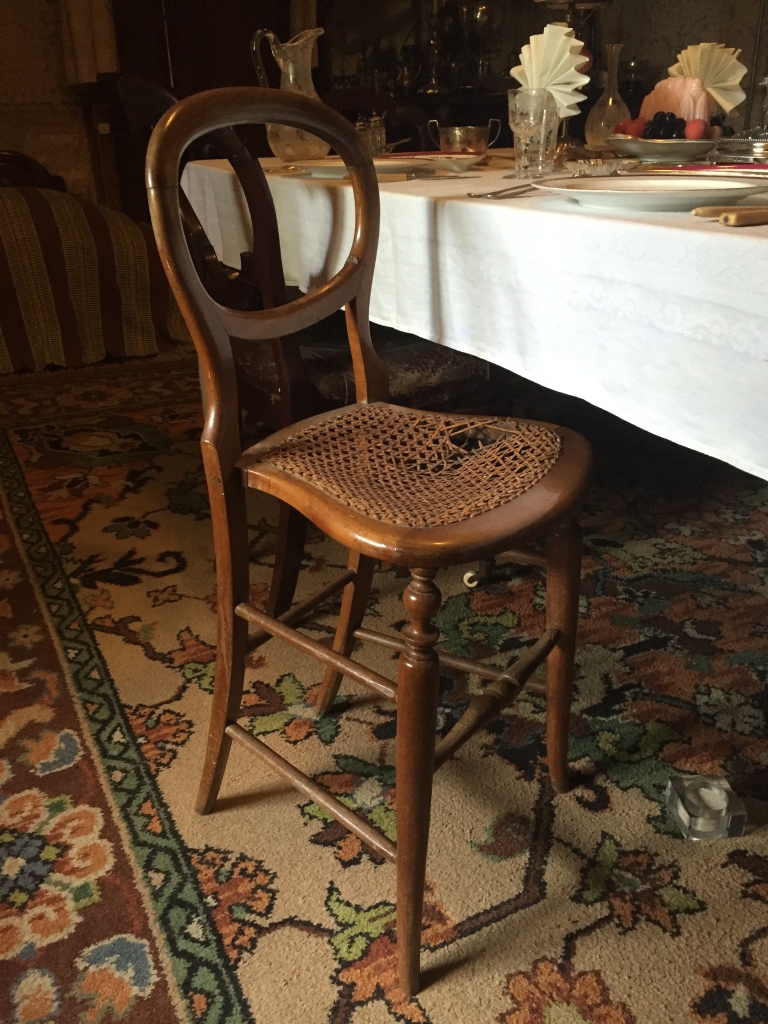
Child’s posture chair at Rouse Hill House. Photo (c) Scott Hill for Sydney Living Museums
The ‘posture’, ‘correction’, or ‘orthopaedic’ chair is also known as an ‘Astley Cooper chair’ – named for the surgeon and anatomist Sir Astley Cooper (1768 – 1841) who invented it around 1800. Cooper was famed for his skill as a surgeon, performing many operations for the first time; reading his achievements, though, all I can think of is “no anaesthesia”. Here’s one horror story. But back to the chairs. In ‘Many Happy Returns’ the young girl at left sits quietly in a posture chair, her unmarried aunt (?) close at hand pouring her a drink from a decanter (are ALL these kids on the sherry?), while her brothers are leaping about in taller versions of adults chairs that are far less likely to topple.
Paging J C Loudon; opinion please!
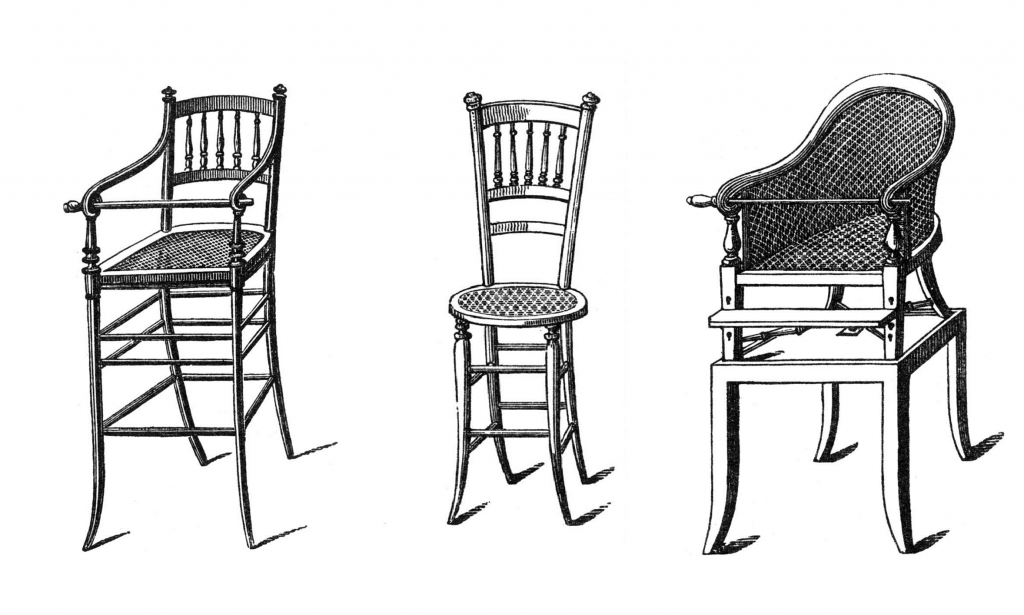
Three childrens chairs from Loudon’s Encyclopaedia 1839 edition
Our favourite polymath John Claudius Loudon described children’s high chairs, and the posture chair (illustrated above at centre):
…an Astley Cooper chair; being a chair recommended by that eminent surgeon, with the view of preventing children from acquiring a habit of leaning forward, or stooping; the upright position of the back affording support when the placed at table, and eating, which a sloping backed chair does not. It is proper to observe that some medical men do not approve of these chairs.
Encyclopaedia of Cottage, Farm and Villa Architecture, 1839.
In this view of the nursery at Vaucluse House you can see a conventional Cooper chair to the left of the table, and a ‘high’ chair in the foreground. A more splendid high chair is to the right, which can be used with – or on top of for height – its matching table:
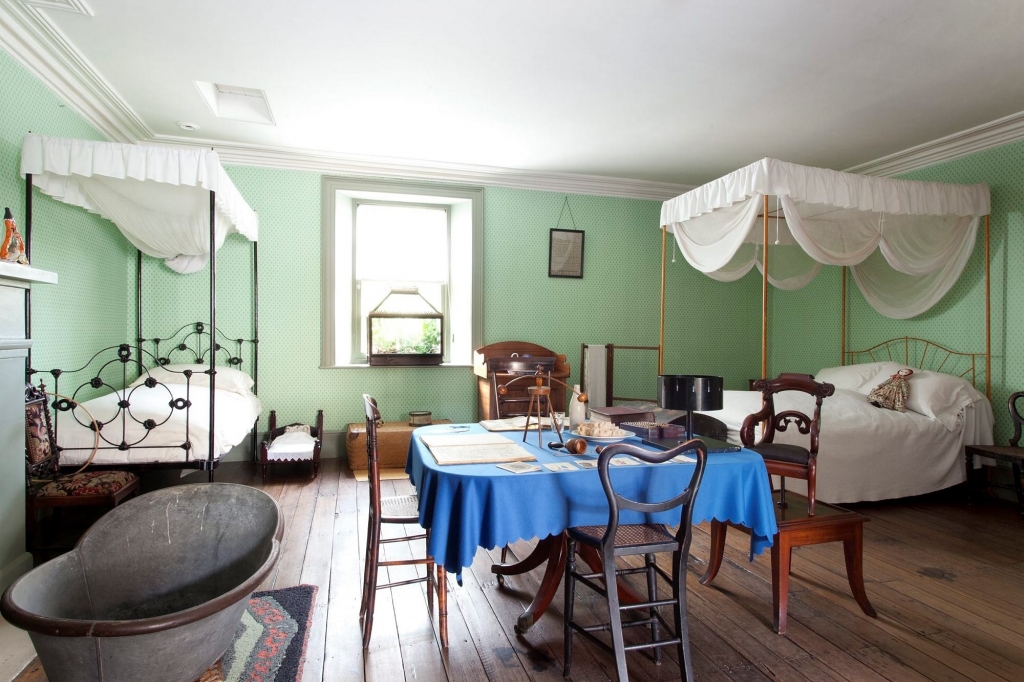
Scene in the nursery at Vaucluse House. Photo (c) Jamie North for Sydney Living Museums
This concept of chair is that on the right in Loudon’s illustration. He described it:
..a child’s elbow-chair, or bergere, as it is commonly called in England. This chair stands on a stool, to which it is attached by a thumb-screw; and when the chair is removed from the stool, the latter forms a table for the child to put its playthings on. The shelf for the feet [not included on the Vaucluse chair] is made to move higher or lower as may be required. The chair is only fixed on the stool when the child is to sit at table to eat, which it may do when about eighteen months of age.
Cooper chairs were also used for punishment: a child forced to sit in one had to maintain a still, upright pose for a considerable time, or risk sliding off the comparatively small seat; if the child slouched or leant to the side they would also quickly end up on the floor. It does seem that health and safety took a back seat in the 19th century… The seat in a Cooper chair is characteristically wider than it is deep; that this is the reverse in the Rouse chair also suggests that it was primarily a ‘high chair’.
The sharp-eyed will be wondering why there’s an ‘ash tray’ on the floor in this photo. Its actually an acrylic support for a chair leg that’s lost its castor, and I overlooked as I took the pic. Oops.
